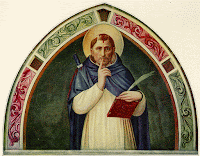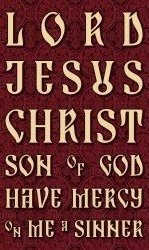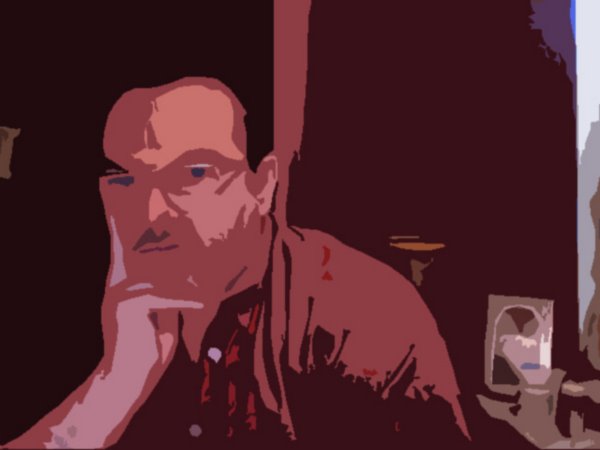Ecclesia Semper Reformanda
(The Church is Always in Need of Renewal)
A Pastoral Letter on the Future of the Church in the Diocese of Sioux City, Iowa
To the Priests, Deacons, Consecrated persons and all the Lay Faithful of the Diocese of Sioux City
 Dear Sisters and Brothers in Christ,
Dear Sisters and Brothers in Christ,
Greetings of peace and joy to you and all your families. By God’s providence we are privileged to live in northwest Iowa and practice our faith in the Diocese of Sioux City. I am honored to serve you as your Bishop.
I take great joy in sharing with you my first pastoral letter for our Diocese. It is my hope that this document be a source of instruction and direction for all of us: priests, deacons, consecrated persons, and faithful laity. The points shared in this pastoral letter are basic to the celebration and faithful living of our Catholic faith. They are the foundation of all that we are called to do for the Lord in our Diocese and beyond.
As I publish this pastoral letter, I do so on the Memorial of Saint Teresa of Jesus. On this day, the Church prays: “O God, you raised up Saint Teresa by your Spirit so that she could manifest to the Church the way to perfection. Nourish us with the food of her heavenly teaching and fire us with a desire for holiness.” May Saint Teresa be an inspiration to all of us in our desire to grow in holiness.
This is the Year for Priests promulgated by our Holy Father, Pope Benedict XVI. I express to each of the priests in our Diocese my profound gratitude for their faithful witness of holiness and dedication to you, the People of God and to me, their Bishop. Priests are co-workers with the Bishop in the mission given to us by Christ. Please pray for us.
May all of us, united in love, continue to grow in the same holiness of Saint Teresa and Saint John Vianney as we continue to live our faith in hope and love.
Your brother in Christ,
Most Reverend R. Walker Nickless
Bishop of Sioux City
EXCERPT:
Praised be Jesus Christ, now and forever!
... [snip] ...
The primary purpose of all liturgy, and especially of the Holy Sacrifice of the Mass, is the worship of God. We sometimes forget this. We go to Mass to worship God, simply because He deserves to be worshiped, and we, his creatures, ought to worship him. Too often we forget that God is transcendent and ineffable, incomprehensibly greater than we can imagine. He is infinite truth and goodness shining forth in radiant beauty. He has created us, keeps us in existence, and redeems us from our sins. In short, He is worthy of our worship. He comes to us at Mass as a Father through His Son in the power of the Holy Spirit. He makes Himself tangibly present to us in the assembly, the ordained ministers, and the proclaimed Word of God. He is also present most especially and immediately in the Eucharist, which has a perfect and infinite value before His eyes. He graciously comes to us, not only to be with us, but also to raise us up to Heaven, to the Heavenly liturgy, where we worship in union with all the angels and saints, the Blessed Virgin Mary and the eternal offering of Jesus Christ to the Father on our behalf. Thus we enter the heavenly sanctuary while still on earth, and worship God in the full manner that He laid out for us!
When we worship God in this way, He sanctifies us, that is, He makes us holy. This is the second purpose of the Liturgy. We are made holy by Jesus when we participate in His divine Sonship, becoming adopted sons and daughters of the Father. We are changed, transformed from the inside out. This comes about through hearing and acting on His Word and by being strengthened and steadily sanctified by a worthy reception of Holy Communion. This in turn leads to a true communion of saints within the local and universal Church. Too often, the purposes of our participation in the liturgy, worship and sanctification, are passed over in a misplaced attempt to “create community,” rather than to receive it as a fruit of the Holy Spirit’s activity within us.
Since, in the Church’s liturgy, we meet God in a unique way, how we worship – the external rites, gestures, vessels, music, indeed, the building itself – should reflect the grandeur of the Heavenly liturgy. Liturgy is mystical; it is our mysterious encounter with the transcendent God, who comes to sanctify us through the sacrifice of Christ made present in the Eucharist and received in Holy Communion. It should radiate Heavenly truth and goodness. This radiance, the splendor of truth, is called beauty. Our liturgy should radiate true beauty, reflecting the beauty of God Himself and what He does for us in Christ Jesus. It should lift up our soul—first through our intellect and will, but also through our senses and emotions—to adore God as we share already in Heaven’s eternal worship. In this vale of tears, the liturgy should be a lodestar, a transcending place of wonder and comfort in the midst of our day-to-day lives, a place of light and high beauty beyond the reach of worldly shadows. So many people only connect with the Church, and sometimes with prayer and God, through Sunday Mass. Should we not offer an experience of beauty and transcendence, compellingly different from our day-to-day lives? Should not every facet of our offering be proportionate to the divine reality?
Many small details can make liturgy either beautiful or banal. In recent decades, in place of beauty and “noble simplicity,” our main principle for discerning and choosing the “little things” has tended toward utility, ease, and even cheapness. Joseph Cardinal Ratzinger, before his election as Bishop of Rome, wrote the following about Church music, that is easily applicable to all parts of the liturgy:
A Church which only makes use of “utility” music has fallen for what is, in fact, useless. She [the Church] too becomes ineffectual. For her mission is a far higher one. As the Old Testament speaks of the Temple, the Church is to be the place of “glory,” and as such, too, the place where mankind’s cry of distress is brought to the ear of God. The Church must not settle down with what is merely comfortable and serviceable at the parish level; she must arouse the voice of the cosmos, and by glorifying the Creator, elicit the glory of the cosmos itself, making it also glorious, beautiful, habitable and beloved…. The Church is to transform, improve, “humanize” the world - but how can she do that if at the same time she turns her back on beauty, which is so closely allied to love? For together beauty and love form the true consolation in this world, bringing it as near as possible to the world of the resurrection.
Pope John Paul the Great, addressing some bishops of the United States on October 9, 1998, recognized the same urgent spiritual needs:
To look back over what has been done in the field of liturgical renewal in the years since the Council is, first, to see many reasons for giving heartfelt thanks and praise to the Most Holy Trinity for the marvelous awareness which has developed among the faithful of their role and responsibility in this priestly work of Christ and his Church. It is also to realize that not all changes have always and everywhere been accompanied by the necessary explanation and catechesis; as a result, in some cases there has been a misunderstanding of the very nature of the liturgy, leading to abuses, polarization, and sometimes even grave scandal. ... The challenge now is to move beyond whatever misunderstandings there have been . . . by entering more deeply into the contemplative dimension of worship, which includes the sense of awe, reverence and adoration which are fundamental attitudes in our relationship with God.
It is imperative that we recover this wonder, awe, reverence and love for the liturgy and the Eucharist. To do this, we must feel and think with the whole Church in “reforming the reform” of the Second Vatican Council. We must accept and implement the current stream of magisterial liturgical documents coming from the Holy See: Liturgiam Authenticam (2001), the Third Typical Edition of the Roman Missal, and its new General Instruction on the Roman Missal (2002), Directory on Popular Piety and the Liturgy (2002), Ecclesia de Eucharistia (2003), Spiritus et Sponsa (2003), Redemptionis Sacramentum (2004), Sacramentum Caritatis (2007), and Summorum Pontificum (2007).
It seems that all is not well with the Liturgy, and the Church is trying to help us. The pendulum swings, the hermeneutic of discontinuity, and the divisions within our Church have been seen and felt in the Liturgy more than anywhere.
The Church’s Magisterium, not our private opinions, is our authoritative guide in this ressourcement. The liturgy belongs to the entire Church, and in a special way to the faithful – not to a particular Diocese or parish, and certainly not to individual priests. I exhort everyone, especially our priests, to keep up with the Church. I expect them to read, study, and understand the above documents and their inner logic and place within the ongoing reform of the Church. It is vitally important that we offer resplendent worship to God alone, with understanding and excellence, obedient to the Church. My own liturgies at the Cathedral, though imperfect, are also meant to be exemplary for the whole Diocese. It is a grave error and a form of clericalism, whether by clergy or lay ministers, to change the liturgy, or even to choose ungenerously among legitimate options, to suit only our own preferences and opinions. This respect for the whole of Tradition is not simply for the sake of “rules and regulations”; this is not legalism, as some have said, but our love for Christ, so that from His Eucharist with all its preeminent beauty and sanctity, He can shine forth for all to see and love.
The Council’s goal in reforming liturgy was, of course, to facilitate the “fully active and conscious participation”17 of all the faithful. We have made great strides in this area. In the same address to bishops cited above, the Holy Father said:
Full participation certainly means that every member of the community has a part to play in the liturgy; and in this respect a great deal has been achieved in parishes and communities across your land. But full participation does not mean that everyone does everything, since this would lead to a clericalizing of the laity and a laicizing of the priesthood; and this was not what the Council had in mind. The liturgy, like the Church, is intended to be hierarchical and polyphonic, respecting the different roles assigned by Christ and allowing all the different voices to blend in one great hymn of praise.
Active participation certainly means that, in gesture, word,
song and service, all the members of the community take part in an act of worship, which is anything but inert or passive. Yet active participation does not preclude the active passivity of silence, stillness and listening: indeed, it demands it. Worshippers are not passive, for instance, when listening to the readings or the homily, or following the prayers of the celebrant, and the chants and music of the liturgy. These are experiences of silence and stillness, but they are in their own way profoundly active. In a culture which neither favors nor fosters meditative quiet, the art of interior listening is learned only with difficulty. Here we see how the liturgy, though it must always be properly inculturated, must also be counter-cultural.
Conscious participation calls for the entire community to be properly instructed in the mysteries of the liturgy, lest the experience of worship degenerate into a form of ritualism. But it does not mean a constant attempt within the liturgy itself to make the implicit explicit, since this often leads to a verbosity and informality which are alien to the Roman Rite and end by trivializing the act of worship. Nor does it mean the suppression of all subconscious experience, which is vital in a liturgy which thrives on symbols that speak to the subconscious just as they speak to the conscious. The use of the vernacular has certainly opened up the treasures of the liturgy to all who take part, but this does not mean that the Latin language, and especially the chants which are so superbly adapted to the genius of the Roman Rite, should be wholly abandoned. If subconscious experience is ignored in worship, an affective and devotional vacuum is created and the liturgy can become not only too verbal but also too cerebral.
Full, active and conscious participation: we have made great strides in this over the years. But often this has happened in a superficial, partial way resulting from a narrow and truncated interpretation of these terms. It is time to dig deeper, “to put out into the deep,”19 into a new and authentic liturgical spirituality that is both old and new, active and contemplative, historical and mystical, Roman and Iowan, familiar and challenging. All of this also applies to our “fully active and conscious participation” in liturgy outside the Holy Mass, especially in Eucharistic Adoration, the Sacrament of Reconciliation, Marian devotions, and the Liturgy of the Hours.
The full text may be found in PDF format HERE.























